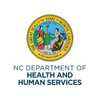What resources and strategies need to be available in communities to divert women with mental health and substance use disorders away from the justice system and into treatment?
Share this project
Topics
Project Overview
Summary
Women account for a small but growing proportion of the justice-involved population, yet justice system policies, practices, and programs are designed for males who are justice-involved and applied to women with limited or no consideration for their distinct needs. Addressing this disparity, and ensuring that more women receive the interventions they need to remain with or return to their families and communities is essential to several NC Department of Health and Human Services (NCDHHS) strategic goals around equity, reducing adverse childhood experiences, and ensuring all North Carolinians have the ability to thrive.
A coalition of subject matter experts and system level leaders will work together in two teams, an Advisory Group and a Project Delivery Team, to map the availability and accessibility of services geared toward the needs of women who are justice-involved using the sequential intercept model. The coalition also will deliver relevant community maps, action plans, and state and local policy and practice recommendations for use by local communities, justice, and health systems to improve access to treatment, and recovery services.
Anticipated deliverables
- Community mapping to identify resources and gaps along six distinct intercept points that women may encounter in the justice system (as identified in the Public Research Associates (PRA) Sequential Intercept Model), including (0) Mobile Crisis Outreach Teams/Co-Response, (1) Law Enforcement and Emergency Services, (2) Initial Detention and Initial Court Hearings, (3) Jails and Courts, (4) Reentry, and (5) Community Corrections/Community Support. Mapping will focus on Wake, Buncombe, and Anson counties for women in the criminal justice system. These three counties were selected based on population size (1 million, 260,000, 22,050, respectively), geographic location in the state (Eastern, Western and South-Central, respectively), location of a women’s prison in or near each of the three counties, urban and rural status, respectively, and to include counties with diversity in resource density. A SIM for Women workshop took place in Fall 2024 in Anson County (see report below). SIM for Women workshops in Wake (April) and Buncombe Counties planned for 2025.
- Anson County SIM for Women (report, December 2024).
- Action plans specific to the three identified counties and applicable to the state as a whole with measurable outcomes to inform long-term needs and scalability.
- Clear state and local level policy recommendations for system-level change and development.
Planned use of results
Results of this study will create a framework for evaluation and action to be adapted and implemented across North Carolina, strategic allocation of resources, capacity building grants, and state-supported technical assistance to improve services for women involved in the justice system.
Funding
This project is funded by a state-level systemic change grant from the Z. Smith Reynolds Foundation to the NC Department of Health and Human Services.
Data
This project will involve primary data collection from interviews with stakeholders including providers of behavioral health services, the NC Department of Adult Correction, county leadership, emergency responders (e.g., police, fire, emergency services, etc.), advocates, service recipients, and other criminal justice stakeholders (e.g., judges, district attorneys, public defenders, magistrates, etc.).
Project Team

NC Department of Health and Human Services

UNC Chapel Hill